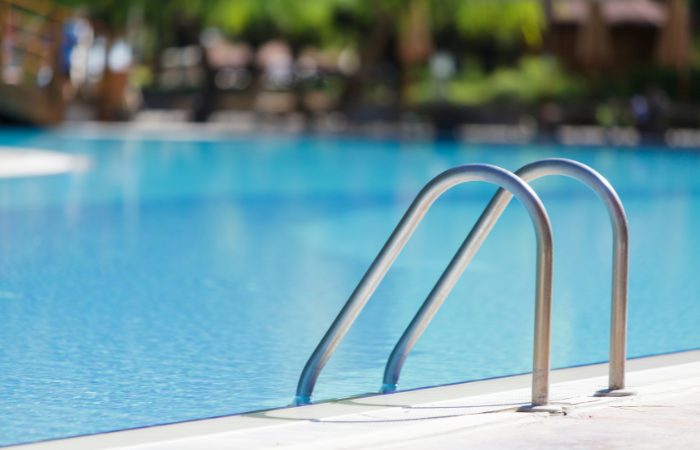Ah, summer—the time of year where everyone makes it a priority to get out of the house to play and explore as much as possible.
The heightened level of activity—and the increased temperatures—during the summer months also means that as parents and caregivers, you need to be even more vigilant about ensuring that your children have fun and stay safe at the same time.
To help with that, we’ve put together a quick list of five essential summer concussion prevention tips, as well as information on identifying a concussion and what to do if you see concussion warning signs:
Prioritize hydration & rest
Summer temperatures are up this year in many parts of the United States. According to the National Oceanic and Atmospheric Administration, about 34.3 million people—or 10 percent of the population of the contiguous U.S.—live in areas expected to have dangerous levels of heat this summer. And it’s not just about the temperature—it’s about the heat index: the measure of how hot it feels outside.
Adequate hydration is important for all of us, but especially for children to help them keep functioning at a healthy level and feeling their best. Research has shown that mild hydration results in increased self-reported symptoms associated with concussions. With that information in mind, the current hydration recommendations from experts at Johns Hopkins University are for children to drink their age in eight-ounce glasses until they reach the age of eight. Children eight and older should drink eight eight-ounce glasses of water per day.
In addition, encourage your children to take regular breaks, especially if they’re outdoors during hot weather on a regular basis.
Wear helmets and other protective gear
There’s no shortage of biking, skateboarding, and rollerblading during this time of year, in addition to summer sports like softball and baseball, soccer, and the beginning of fall football season. For these activities, it’s critical for children to wear properly fitted helmets.
According to Tracie Bearden MS, CCC-SLP, CBIST, a medical-based speech therapist and certified brain injury specialist, helmets should sit level on a child’s head and low on their forehead, one to two finger-widths above their eyebrows. The helmet’s side straps should form a V-shape under—and slightly in front of—the ears. When you tighten the chin strap after snapping it together, you should be able to only fit two fingers between your child’s chin and the strap.
While wearing a helmet doesn’t necessarily prevent a concussion, it can help to reduce the risk of brain injury or skull fracture—and it can potentially reduce the severity of symptoms that may occur in the event your child experiences a concussion. A tip: if your child does take a serious spill on their bike, remember to replace the helmet. It’s not as protective as it was before the crash!
Supervise play & be familiar with your surroundings
Summer also means that your local playground is open and full of activity. The Children’s Hospital of Richmond suggests these tips to promote safety on the playground:
- Make sure playground equipment is age-appropriate
- Check for any signs of danger—rusty or damaged equipment, or any hazards on the ground that might cause children to trip
- Inspect the guardrails to make sure they’re both sturdy and the proper height for your child
- Be sure your child is supervised at all times—both on public playgrounds as well as backyard equipment
In addition, it’s always good to proactively check out the terrain you’ll be encountering on family hikes or bike outings. It’s also always a good idea to tell someone where you’ll be—in the event you experience a concussion, acute confusion can make it hard to let others know you’re in need of help!
Be extra careful with water-related activities
Boating, inner tubing, and even the sprinklers and slip n’ slides you might set up at home—all of these are great ways to cool off during the summer months. However, also water adds an extra layer of complexity to the safety precautions you might already be taking.
If boating or spending days at a swimming pool are part of your summer plans, be sure to check out the depth and clarity of the water for swimming or diving. If you aren’t sure of the depth or are unable to see below the surface, make sure children don’t dive headfirst. It only takes one dive off a boat in too-shallow water for a concussion to occur—there’s always a risk of hitting their head at the bottom of a pool, or injuring their head on a hidden object, such as a rock.
Rest backyard water slides and sprinklers on soft and level surfaces whenever possible, away from tree roots and rocks. It’s also a good idea to ensure that children using a water slide can stop completely at the end. You don’t want them speeding down a waterslide to be greeted with a tree or rock that’s too close!
Know the signs of a concussion
Not only do concussions happen in a variety of ways, but symptoms are different for everyone—and that includes how children experience concussions. Similarly, some concussion symptoms might show up immediately, while others may not appear for hours or even days after an injury.
Here are just a few of the signs to look for:
- Headache
- Vision issues
- Nausea or vomiting
- Dizziness or being off-balance
- Exhaustion
- Sensitivity to noise or light
- Personality changes or irritability
- Numbness or tingling
- Mental fog or concentration problems
- Clumsiness
- Emotions out of whack
- Changes to sleep
There are also additional symptoms to consider for toddlers and infants:
- Crying without being able to be consoled
- Refusing to nurse or eat
For more information (including when to call 911 and where you can go to get concussion symptoms checked out), head here.
